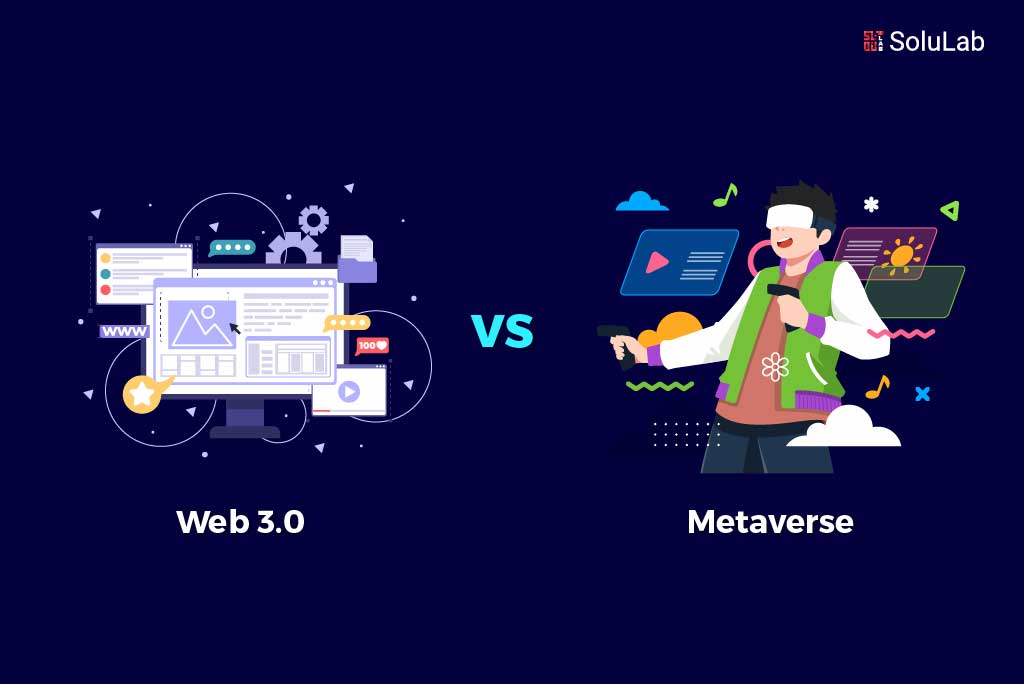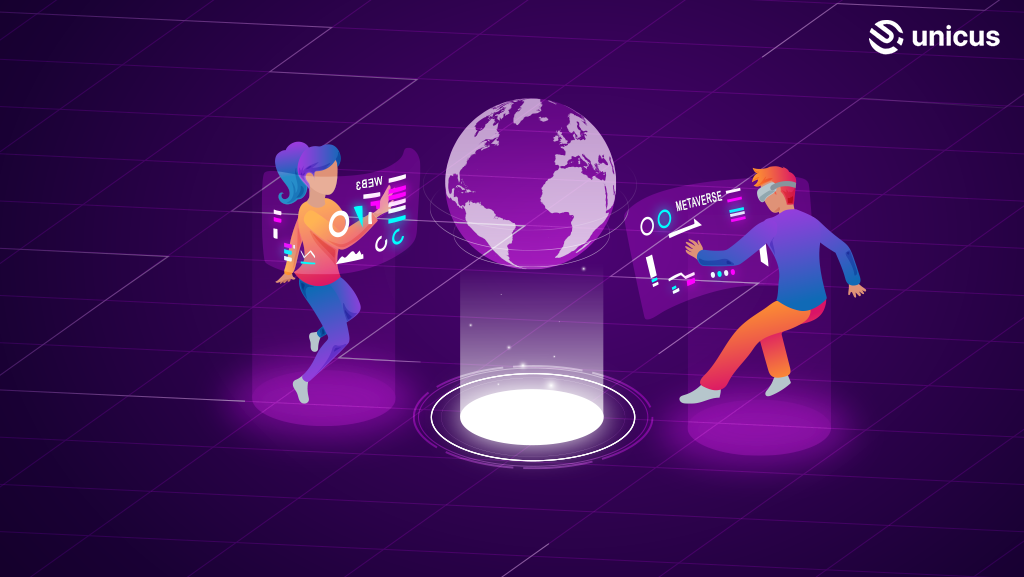This article was published as a part of the Data Science Blogathon.
Introduction
Decentralized protocols, such as blockchain, the technology behind bitcoin transactions, will be employed in the web 3.0 revolution. It aims to overcome some of the primary drawbacks and flaws of the present internet era by tackling the crucial concerns of data ownership and control. The idea behind Web 3.0 is to bring the internet into the future. It develops users’ abilities to manage and claim ownership of their works, online material, digital assets, and online personas. What we are now seeing is called Web 2.0. Businesses concentrate on the development and delivery of their goods and services.

Web 3.0 and the Future?
Decentralized protocols, like blockchain, the technology behind bitcoin transactions, will be employed in the web3 revolution. It aims to overcome some of the primary drawbacks and flaws of the present internet era by tackling the crucial concerns of data ownership and control. Users can access their data thanks to the Web 3.0 platform. As a result, people won’t have to rely on major tech corporations to supply services to one another or manage the components of the internet that they utilize.
What is Metaverse?
A global 3D network of virtual reality worlds is the Metaverse. It is frequently defined as a hypothetical version of the Internet as a single, worldwide virtual environment made possible by using virtual and augmented reality headsets in futuristic and science fiction works.
Metaverse will develop as a new world and will include various elements like VR Chat Rooms, Online Games, Online Activity centers, and so on.
People use avatars to represent themselves, communicate, and virtually expand the community in the metaverse. It will use digital currency, and users will be able to make various purchases using the in-world currency. Using a virtual reality headset and controllers, users can also enjoyably and aimlessly traverse the metaverse.
Metaverse vs. the Regular Internet?
There are billions of people connected to the internet. Internet users can engage with websites, communicate with one another, and purchase and trade products and services once they are online.

The metaverse improves the online experience of the internet. Through the use of technology like virtual reality (VR), augmented reality (AR), artificial intelligence (AI), social media, and virtual currency, users can navigate a virtual world that mirrors parts of the actual world in the metaverse. People use the internet to do their browsing. However, individuals can “live” in the metaverse to some extent. Although the concept of participating in an online virtual world has been around for a while, a true metaverse where real-world interactions are feasible is still years away.
Metaverse in the real world
Different metaverses have emerged for general usage due to the development of virtual world platforms like Second Life. One feature of several metaverse iterations is the fusion of virtual and real-world environments, as well as virtual economies. Virtual reality technology is frequently linked to metaverse development in order to improve immersion. It has exaggerated the advancement of numerous technologies and initiatives as a word used for public relations objectives. Privacy, addiction, and safety are issues inside metaverses, just as these sectors have difficulties overall. The future of MetaVerse looks bright, and there will be a lot of development in this field and much more to explore and grow.
How do Web 3.0 and Metaverse relate to each other?
Web3, the third phase of the World Wide Web’s evolution, should not be confused with the Metaverse. The Metaverse is a parallel online world built on virtual reality where users can interact with each other and virtual items in a 3D environment. It’s the internet’s expansion into a three-dimensional virtual environment. People can build avatars to represent themselves on this immersive, interactive, and social platform. They can also purchase and sell virtual goods there and communicate with other users in real-time. More information on blockchain technology and ideas, such as digital identification, smart contracts, and decentralized apps, can be found on Web 3. (dApps).
Differences between Web3.0 and Metaverse
There are some differences between Web3.0 and MetaVerse. Let us check some of them.
The main distinction between the two technologies is that people use Web3 to access the Metaverse in a way similar to how a car accesses a road.
In Web3, users and the community will have decentralized ownership and control over the web. On the other hand, the metaverse is a shared digital environment that allows people to communicate, create economies, and engage in real-time interaction without regard to ownership.
The metaverse uses technologies like AR/VR and digital currency, while Web3 is also built on blockchain and cryptocurrencies. This is a result of Web3’s decentralized structure and lack of significant corporate influence or control.
The two are also used in different ways. A new set of guidelines called Web3 describes how the internet ought to be used and regulated. Gaming, social media, shopping, and other experiences are all part of the metaverse.
Several crucial technologies that support the operation of the entire ecosystem can be found in the Metaverse. Connection, interfaces, decentralization, a creative economy, and cutting-edge technology are all needed to establish the Metaverse. On the other hand, the goal of Web 3.0 is to build a decentralized web that only uses blockchain technology. Using blockchain, which is controlled by a decentralized peer-to-peer network environment, users can connect with online services.
Similarities between Web 3.0 and Metaverse
Keeping aside the differences, there are also a lot of similarities between the two; they are:
The metaverse and Web3 are inextricably connected. Even though Web3 is still widely referred to as decentralized, the metaverse will continue to exist in surface and deep webs; nonetheless, the metaverse will remain centralized in terms of social media governing platforms.
Both are constructed using cutting-edge technologies that will advance. The semantic web connects the metaverse and Web3.0. The development of a complex user interface will largely depend on AI, which is yet another important element of both technologies.
Many technological breakthroughs made with blockchain bring the two technologies closer together. Every new blockchain idea is examined as a potential module incorporating the Web3.0 engine to drive the metaverse’s products and services.
The metaverse and Web3 are still in their infancy. Years from now, the finished products can be completely different because technology isn’t always used in the ways intended.
Are Web 3.0 and MetaVerse related?
The portraits of Web 3.0 and the Metaverse are the key points of comparison. You can interact with 3D friends, objects, and locations in the metaverse. For instance, you and your friends can play games on the creator’s property. With Web3, individuals may create, own, sell, and buy their own content. Users can also charge for their creations.
The Metaverse is more concerned with how users will engage with it than Web 3.0, which is primarily concerned with who will reign (tech giants or individuals) and manage the internet in the future. Nowadays, a sizable portion of the population uses computers, smartphones, and tablets to access apps and surf websites. According to proponents of the Metaverse, we will use Virtual Reality (VR) technology to access the internet in the future and travel between virtual worlds using digital avatars. Data is owned, open, widely disseminated, and collectively owned by peer-to-peer networks by using the blockchain system for both of them sequentially. However, this is different in the scenario where one can find to do business through VR, and another aids contributors to own their data.

Web3 aims to preserve the internet under public ownership and away from the monopoly of tech oligopolies. The cryptocurrency market for bitcoin is one of the more successful instances. On the other hand, tech behemoths are beginning to reformat or are attempting to purchase metaverse businesses in order to take control of this realm. However, analysts are reassured that government regulation of the internet would make it difficult for businesses to control the metaverse.
Conclusion
There are certain similarities and differences between Web 3.0 and MetaVerse. We read a lot in the article above. To summarise:
- Given that both web3 and the metaverse are being developed using blockchain technology, it may be difficult to tell their differences.
- The metaverse is a brand-new virtual 3D ecology in general. It gives people a realistic, immersive experience. They can use it to virtually work, learn, play, trade, and perform other daily tasks.
- Online “new worlds” are created by the metaverse, but web3 decentralizes an infrastructure that allows people to generate and manage digital assets (in the metaverse and elsewhere).
Users must render commonplace tasks in 3D in order for the metaverse to function as intended. In the event that this takes place, participant interaction will In order to facilitate secure transactions using NFTs or other assets. Web3 will decentralize digital assets, creating a new digital economy centered on business and social interaction.
Virtual reality is destined to permeate every aspect of our existence. These worlds are already well beyond computer games and gradually extend into fields including business, communications, education, and the arts.
The media shown in this article is not owned by Analytics Vidhya and is used at the Author’s discretion.





